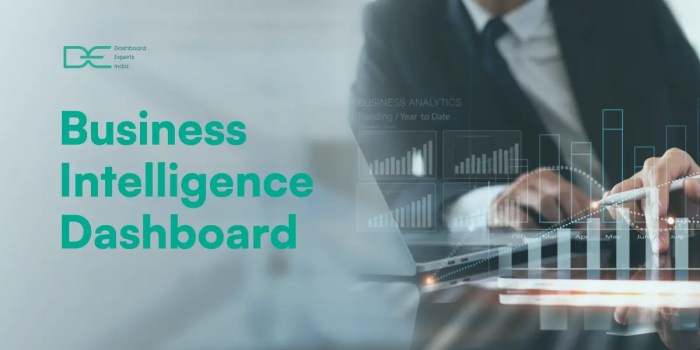business intelligence dashboard sets the stage for this enthralling narrative, offering readers a glimpse into a story that is rich in detail and brimming with originality from the outset. These dashboards serve as crucial tools for organizations, transforming raw data into meaningful insights that drive informed decision-making. By utilizing visual representations of data, businesses enhance their ability to comprehend complex information quickly and effectively, paving the way for strategic actions that can lead to significant growth and efficiency.
In today’s fast-paced business environment, the importance of a well-structured business intelligence dashboard cannot be overstated. These dashboards not only consolidate various data sources but also present metrics and key performance indicators in a visually engaging manner, enabling teams to monitor performance and track progress towards their goals with ease. As organizations increasingly rely on data-driven strategies, understanding the core components and best practices for designing effective dashboards is essential for achieving success.
Definition and Importance: Business Intelligence Dashboard
Business intelligence dashboards are vital tools for organizations, designed to present data visually and facilitate informed decision-making. These dashboards consolidate data from various sources, allowing executives and analysts to monitor performance metrics and key performance indicators (KPIs) in real-time. The significance of utilizing dashboards lies in their ability to transform complex datasets into intuitive visuals, enhancing clarity and enabling quick insights.
The role of visual data representation in dashboards is crucial, as it aids in comprehending patterns and trends that may be obscured in traditional reporting formats. By employing charts, graphs, and other visual elements, dashboards make data more accessible and actionable.
Key Components of a Business Intelligence Dashboard

An effective business intelligence dashboard comprises several essential components that work together to present a cohesive overview of organizational performance. These components include:
- Data Visualizations: Common types include bar graphs, line charts, pie charts, and heat maps, each serving a specific purpose in illustrating data trends.
- Metrics and KPIs: Dashboards typically showcase critical metrics such as sales figures, customer satisfaction scores, and operational efficiency indicators, providing a snapshot of business health.
- Interactivity Features: Filters, drill-down capabilities, and tooltips that allow users to explore data in more detail.
Designing an Effective Dashboard, Business intelligence dashboard
Creating user-friendly dashboard layouts is paramount to ensuring user engagement and effective data interpretation. Best practices for dashboard design include the following considerations:
- User-Centric Design: Aligning the dashboard layout with user needs and business goals helps in prioritizing the information displayed.
- Clear Navigation: A well-structured layout with intuitive navigation aids users in finding relevant insights quickly.
- Color Schemes and Fonts: Choosing appropriate color palettes and fonts enhances readability and helps in emphasizing critical data points.
Tools and Technologies
Several software and tools are available for building business intelligence dashboards, each offering unique features. Notable tools include:
- Tableau: Known for its robust visualization capabilities and user-friendly interface.
- Power BI: Offers seamless integration with Microsoft products and strong analytical features.
- Google Data Studio: A free tool ideal for users new to data visualization.
Each of these tools has its advantages and disadvantages, such as cost considerations, ease of use, and integration capabilities. A comparison of cloud-based versus on-premise dashboard solutions highlights accessibility and security concerns, with cloud solutions offering greater flexibility, while on-premise options may provide enhanced data security.
Data Sources and Integration

Business intelligence dashboards can integrate various data sources, from CRM systems to financial databases. Integrating data from multiple systems is essential for providing a comprehensive view of business performance. The importance of data quality and accuracy cannot be overstated; unreliable data can lead to misguided decisions.
Creating a unified dashboard involves several steps, including identifying relevant data sources, establishing data connections, and ensuring data consistency across platforms.
User Interaction and Customization

User interaction features greatly enhance the experience of using business intelligence dashboards. These features include:
- Filters: Allow users to refine data views based on specific criteria.
- Drill-Downs: Enable users to explore underlying details of aggregated data.
- Personalization: Customizable dashboard views cater to individual user preferences, improving usability and relevance.
Strategies for enabling users to customize their dashboard views include providing flexible layout options, adjustable metrics, and the ability to save personalized settings.
Case Studies and Examples
Real-world examples of organizations successfully utilizing business intelligence dashboards illustrate their impact on business outcomes. For instance, a retail company implemented a dashboard to monitor sales performance across regions, leading to informed inventory strategies and improved revenue.
Specific use cases demonstrate how dashboards enhance operational efficiency, such as a manufacturing firm using dashboards to track production metrics in real-time, allowing for quicker response to operational issues and reduction of downtime.
Future Trends in Business Intelligence Dashboards
Emerging trends are shaping the future of dashboard design and functionality. Key trends include:
- Artificial Intelligence: AI and machine learning are enhancing dashboard capabilities, enabling predictive analytics and automated insights.
- Mobile Dashboards: The growing importance of mobile access allows users to monitor performance on-the-go, increasing accessibility.
- Advanced Visualizations: The evolution of visualization technologies is leading to more interactive and immersive dashboard experiences.
Last Recap
In conclusion, the journey through the intricacies of business intelligence dashboards reveals their undeniable value in today’s data-centric world. From understanding their key components to embracing the future trends shaped by technology, it’s clear that these tools are not just optional but essential for modern organizations. As businesses harness the power of dashboards, they enhance their operational efficiency and cultivate a culture of informed decision-making, ultimately positioning themselves for sustained success in a competitive landscape.
